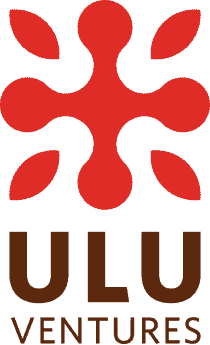A Rubric for Evaluating Seed-Stage Investments 2.5
This is an updated version of our much-read original investment rubric. Read our quick FAQs about the Ulu investment process and more.
Have you ever wondered how a venture capital firm evaluates a potential investment? You’re not alone. We hope what follows will help illuminate what Ulu specifically looks for in companies and perhaps gives you insight into conversations with other investors as well.
At Ulu Ventures, we evaluate all potential investments using a standard rubric built on the following dimensions:
- Good Ulu Fit
- Big Market Opportunity
- Strong Team
- Compelling Product
- Focused Go-to-Market
- Financial Viability
- Clear and Aligned Values
Good Ulu Fit
We look at five factors when assessing basic fit: Geography, Stanford, Company Stage, Diversity, and Thesis. Startups need to meet at least three of the five criteria to be a good fit.
We look at five factors when assessing an investment opportunity: Geography, Stanford, Company Stage, Diversity, and Category. Startups need to meet at least three of the five criteria to be a good fit.
Geography
We make most of our investments in and around Silicon Valley. Having said that, we recognize there are other hotbeds of innovation, and we have invested in companies located up and down the west coast, in the Northeastern corridor, and elsewhere in the US. We rarely invest in companies headquartered outside the US.
Stanford
We have been associated with Stanford for many years and find the ecosystem creates a rich opportunity set for early-stage investments. Stanford is a unique entrepreneurial ecosystem with 40,000 active companies founded by approximately 220,000 alumni and faculty, generating $2.7 trillion in annual revenues in 2017, a staggering number that compares favorably to the sixth largest economy in the world that year, according to the World Economic Forum.
Silicon Valley startups often cut across traditionally defined sectors, create new categories, or reposition existing categories. Stanford’s excellence across a wide range of disciplines, including top programs in computer science, engineering, medicine, business, law, education, and earth, energy and environmental sciences, as well as over 200 interdisciplinary research centers and programs, creates many of the best investment opportunities in Silicon Valley.
Seed-Stage
The vast majority of our investments are “Seed-Stage,” which can mean pre-seed, seed, post-seed, and occasionally Series A. Ulu’s typical initial investment is around $1,000,000, though we have invested both more and less than that average amount.
Diversity
Diversity is an essential part of Ulu’s investment thesis. It is grounded in the lived experience of our founders as well as abundant empirical evidence. Whether by analyzing thousands of VC investments or by tracking the performance of Fortune 500 companies over time, the research has consistently shown that more diverse companies outperform less diverse ones.
To us, targeting diverse founders means focusing on traditionally overlooked and underrepresented groups in venture capital, including women, people of color, and immigrants. Nonetheless, we find talent and great returns come from individuals of all backgrounds, and as such, we apply the same criteria to all entrepreneurs, regardless of gender, race, or heritage.
Our diversity thesis provides Ulu Ventures a meaningful advantage in sourcing and ultimately funding high-performing founders and firms that other venture firms systematically overlook. In fact, 89% of our investments in Fund III have a diverse member in the founding team, compared to only 23% across U.S. VCs.
Thesis
Ulu’s investment thesis aligns with Marc Andreessen’s famous quote, “Software is Eating the World.” Virtually all of Ulu’s investments over the past 14 years fall into this horizontal thesis of software and the internet. Enterprise IT specifically has been Ulu’s bread and butter since the founding of the firm; however, we view our job as not to predict or make the future but to identify the entrepreneurs who are predicting and making the future. We always want to be investing time in exploring new technology trends and business innovations and believe our job is to have a prepared mind. When an entrepreneur comes to us with a vision for how to use the latest technology to create a world-changing business innovation, we need to be informed enough to evaluate the risk and return of their proposal.
Big Market Opportunity
We love big market opportunities, but sheer size isn’t enough. Within the broad categories of software and internet, competitive advantage begins with a fresh view of category definition and a strategy for establishing a previously unseen or undervalued view of either the market’s understanding of the problem or the solution set, or both. Ulu looks at a combination of short-term and long-term considerations when assessing the market opportunity.
Compelling Customer Problem
The entrepreneur’s solution must address a top three problem for a customer with a budget. In most cases, we’re looking for either 1) a unique solution to a known problem or a 2) compelling case for seeing the problem in a new way (a doable solution to a previously unknown problem). Either way, solving the problem requires moving the needle on a metric the buyer cares about.
Total Addressable Market
Total Addressable Market (TAM) represents the total revenue potential from a group of customers available to anyone competing in the category. We start to get interested when the TAM is $3bn or higher.
Many founders take a top-down approach to estimating market size. For example, the total size of the business lending market or the total domestic spending on adult education. We find this kind of macro approach does little to illuminate the true market potential. In contrast, we take a bottom-up approach, starting with the idea of a “sweet spot” or ideal customer. It can be useful to think about this target customer geographically, by customer type, by revenue, etc. The more precise and focused you can be, the better.
From the idea of a “sweet spot” customer, you should be able to describe and estimate the following characteristics:
- How many of those customers exist in your initial market?
- How much a typical customer will pay? This gets to the idea of your business model. For example, do they sign license agreements, and if so, is it by the seat, business unit, enterprise, or usage? Or do they pay per transaction? Or something else?
- How much of the market is addressable, meaning what percentage of those target customers are likely buyers from you or any similar competitor? (Note: This is a different question than your likely market share at any point in time.)
When we do our own math, we focus on numbers five years from now using “low/base/high” estimates. Multiplying those estimates together gets us a “sweet spot TAM.”
To the idea of a “sweet spot” TAM, we add the “adjacent” TAM. We expect your adjacent markets to be significantly larger than the initial sweet spot (remember, we’re looking for focus in the seed-stage). For some founders, that adjacency might be the same offer to new markets or customer types, new offers to the same markets, or some combination of those ideas.
Although you can do the same type of bottom-up analysis for the adjacent markets, we’re usually happy with a multiple of your sweet spot along with a descriptive justification. Your full TAM is the sum of both initial and adjacent markets.
Strong Team
Are the team’s capabilities a good fit for accomplishing their key fundable milestones for Series A funding? We consider the following factors when answering this question.
Domain expertise
In the enterprise, there are often good reasons for seemingly outmoded behaviors. A successful new solution usually must address, even respect, these underlying reasons. This subtlety makes it difficult for outsiders to empathize with their target market, especially when insiders can’t articulate why things are done a certain way. Hence entrepreneurs with domain expertise are often more likely to develop new solutions with a high chance of adoption.
Committed team
Launching a startup takes a huge amount of effort. We favor entrepreneurs who are 100% committed to launching their startups with no significant outside commitments. Founder vesting is a strong signal that the entrepreneurs are committed to the long term and willing to align interests with investors.
Fit for Early Challenges
A key milestone for Series A funding is often an ARR run rate of $2m – $3m. This requires not just sales skills but the ability to move from pilot projects to full-blown enterprise implementations. While the milestone is pretty specific, “team fit” is often context-dependent. For example, if the product is a “pain killer” or has few competitors or potential substitutes, the team may not need stellar sales skills. If customers are not aware they have a problem, or there are excellent or incumbent competitors, then demonstrated marketing and sales skills are usually crucial in the early team.
Compelling Product
For most startups, technology is not a sustainable differentiator. Technology moves quickly and can be easily replicated, especially by big companies with bottomless resources: they are experts at breaching moats. So, we’re interested in insight, a big idea that does more than just surf a hot technology trend. Specifically, Ulu looks at the following factors.
Traction
This usually means customer traction (engaged users and paying customers), but it can also come in other forms. Traction is not required for us to invest, but it is a big plus. Even a small amount of traction means the product works, you’ve figured out how to sell to an enterprise customer, and you’re solving someone’s problem. We also assess how challenging it will be to build market traction that is credible to series A investors.
The Whole Product
By this, we mean the core product plus everything needed to create a compelling reason for customers to buy and enjoy using the product. Said another way…the full experience is the product. Building a whole product is crucial for moving from selling to early adopters to the mass market. Early adopters are willing to accept significant headaches in order to be the first to adopt cool new technology. Mass market customers, however, are not willing to accept these headaches. They want things to work and value to be proven.
UIu values entrepreneurs who are sensitive to whole product issues such as the psychology of end users, the culture and context in which the solution will be deployed, and a disciplined process to observe what users do as opposed to what users say they do or will do.
Focused Go-to-Market Strategy
Ulu likes entrepreneurs who know how to disqualify sales prospects and prioritize their sales effort efficiently. From seed-stage onward, entrepreneurs are most challenged to build an effective go-to-market that first delivers proof of product-market fit and later develops the ability to acquire customers, drive utilization, and generate attractive lifetime value at an acceptable cost of acquisition. As seed investors, we’re looking for signs of a focused go-to-market strategy, one that effectively targets and cultivates early adopter customers.
Focused Sales Strategy
Most customers will never buy an early product from a startup; however, many will happily waste your time in sales calls. Ulu likes entrepreneurs who know how to disqualify sales prospects and prioritize their sales efforts efficiently. We’re especially keen to understand your ideal customer, look at your pipeline of interested prospects, and learn about your early sales success.
Access to Early Adopters
We like entrepreneurs with an unfair advantage in landing initial customers and the ability to develop coherent plans for creating a critical mass of customers in one niche of their market before expanding to other markets. (Further reading: Crossing the Chasm)
Network Effects
We’re keen to see evidence of strong network effects or mechanisms where every new connection makes a product or service more valuable to every other connection. According to NFX, network effects have accounted for approximately 70% of the value creation in tech. Examples include physical networks (landline phones), marketplaces (eBay), personal networks (Facebook), platforms (IOS, Android), data (Yelp!), and many others. (Further reading: The Network Effects Bible)
Financial Viability
Many VCs say they want a 10x multiple. If they invest $1 in a startup, they want $10 back at the end of the day. We say the same thing, but probability-weighted. We look for companies with the potential to deliver a 10x or better probability weighted multiple on invested capital (PWMoIC). Valuation, Business Model, Dilution, and Exit Multiple are direct inputs to this analysis.
Valuation
Valuation is the most important investment term for us at the seed-stage. In the case of a SAFE or convertible note, the cap on conversion is roughly equivalent to a valuation.
An uncapped note almost always disqualifies a startup for us because it makes a risk/return analysis extremely difficult to perform. More importantly, the lack of a cap misaligns interests. In such cases, Ulu is “better off” as an investor if the round in which we convert has a low valuation.
Business Model
A Business Model is your working theory for how your company will make money. A business model with high margins is more forgiving, potentially allowing an entrepreneur to grow their business with fewer dollars raised or to make mistakes and have the financial wherewithal to recover. Lower-margin business models are more likely to die when faced with high costs of customer acquisition, competitive pressures, or difficult economic conditions.
Dilution
Dilution is the reduction in the ownership percentage of existing shareholders from subsequent equity issuances. Ulu’s model accounts for dilution from seed stage to exit because even the most successful startups experience significant dilution as they hire employees and raise additional capital. Capital-efficient businesses tend to experience lower amounts of dilution and lower chances of running out of money. This is a tendency, not a rule, as a growth strategy and competitive forces may lead to a desire to raise more capital more quickly.
Exit Possibilities
Ulu’s model is to invest in startups with industry transformation potential. Historically, success has led this kind of company to file for an initial public offering. Hence, Ulu benchmarks exit multiples based on analogous publicly traded companies. Strong M&A possibilities are a bonus, but they are a smaller driver of our exit assessment.
Clear and Aligned Values
Entrepreneurship, at its best, is a spiritual endeavor
The aim of entrepreneurial work is to bring into existence something beneficial that exists only in “potential.” Our philosophy is that when we do right by others, trust emerges. When we work together while nurturing each other, community emerges. Trust and community are the soil in which the seeds of entrepreneurial vision, capital, and effort take root and flourish. Since shared values are the foundation of meaningful relating, Ulu looks for teams that care about and share values. Given how many meanings the term “value” takes, we want to clarify three values that are important for us.
Authentic Voice
Ulu looks for founders who are comfortable in their own skin; who speak unapologetically about and thoughtfully seek to behave in alignment with their stated values. This voice articulates the meaningful purpose of the venture. Henry Ford said, “Business must be run at a profit, else it will die. But when anyone tries to run a business solely for profit … then the business must die as well, for it no longer has a reason for existence.” We seek to partner with entrepreneurs we find inspiring in vision and character.
Ethics
Ulu looks for founders who are intellectually honest and work to stay self-aware. Entrepreneurs who proactively seek material information holistically and truthfully to build trust and fruitful relationships in business mean a lot to us.
We hold ourselves to the same standard, and our process is designed to be truthful and transparent When the foundation of a relationship is truthful, sincere, and respectful, more often than not, it’s easier and more enjoyable. (Further Reading: Ethics for the Real World)
Character
It is possible to be ethical and still behave badly day-to-day. So, ethics are not enough. We value character and founders who embody servant leadership or “laddership.” At Ulu, we strive to lead by example, build character by treating others well and fairly, help people grow, and improve the venture industry. We want entrepreneurs to choose to work with us because they believe we will be great partners. We don’t want entrepreneurs to work with us because, unbeknownst to them, we’ve taken advantage of them or merely because we’ve given them the first term sheet or the highest valuation.




